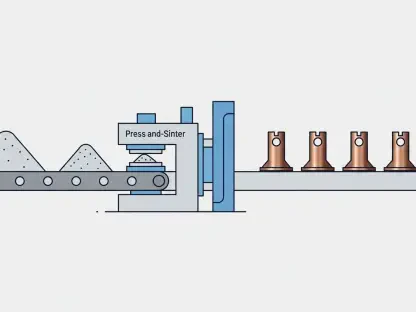What happens when a corporate decision to relocate a car plant across a border ignites a firestorm of economic and political backlash? In a move that has stunned Canadian leaders and workers alike, Stellantis, one of the world’s leading automakers, has decided to shift production of its Jeep Compass from Brampton, Ontario, to Illinois in the United States. This relocation, part of a massive $13 billion investment in American manufacturing, has sparked outrage in Canada, where the auto industry is a cornerstone of the economy. The decision threatens thousands of jobs and deepens already strained trade relations between two nations long considered close allies. As tensions mount, the voices of affected workers and defiant politicians paint a vivid picture of a cross-border crisis unfolding in real time.
The significance of this story extends far beyond a single plant closure. It encapsulates the broader struggle between national interests and global business strategies, particularly under the shadow of U.S. policies pushing for domestic production. With Canada’s auto sector employing over 125,000 people directly and supporting nearly half a million more, the stakes couldn’t be higher. This relocation is not just a business choice; it’s a potential unraveling of decades of economic partnership under the United States-Mexico-Canada Agreement (USMCA). As Canadian leaders rally to protect their interests, the outcome of this dispute could reshape the future of North American trade and manufacturing.
Why a Car Plant Relocation Ignites Cross-Border Fury
At the heart of this controversy lies Stellantis’ decision to move Jeep Compass production from Brampton to the reopened Belvidere Assembly Plant in Illinois. This isn’t merely a corporate reshuffle; it’s a blow to a community that depended on the plant for economic stability. The Brampton facility, once a hub of activity, saw its doors close in 2023, leaving 3,000 workers without jobs. Now, the choice to prioritize U.S. operations has turned a local issue into an international flashpoint.
The timing of this move amplifies its impact, coinciding with heightened trade friction between Canada and the U.S. American policies advocating for “made in the USA” manufacturing have put pressure on companies like Stellantis to align with domestic priorities. For Canadian officials, this feels like a betrayal, especially given prior commitments tied to significant government support. The relocation has become a symbol of larger fears—that Canada’s industrial base could erode under foreign influence.
Beyond economics, national pride plays a significant role in the backlash. The auto industry isn’t just about jobs; it’s a point of identity for Ontario, where manufacturing has long been a source of strength. As this decision reverberates, it raises critical questions about how far corporations will bend to political pressures and what that means for smaller economies reliant on cross-border partnerships.
The Wider Lens: Trade Strains and the Auto Industry’s Crucial Role
Zooming out, the Stellantis relocation must be viewed against the backdrop of a complex Canada-U.S. trade relationship. For decades, the two nations have thrived on integrated supply chains, with over 75% of Canadian exports heading south. However, recent U.S. policies, including tariffs and incentives for domestic production, have strained this bond, creating an uneven playing field for Canadian industries.
The auto sector, Canada’s second-largest export industry, stands as a linchpin of this economic dynamic. It directly sustains 125,000 jobs and indirectly supports nearly 500,000 more through related fields. Communities like Brampton have built their livelihoods around plants that produce vehicles for global markets. When a major player like Stellantis shifts operations, it sends shockwaves through these interconnected systems, threatening not just jobs but entire regional economies.
This situation also highlights the vulnerability of Canada’s position in North American trade. With the USMCA as a framework, there’s an expectation of fairness, yet political rhetoric from U.S. leaders often prioritizes American workers over mutual benefit. The Stellantis move underscores how trade disputes can have tangible, devastating effects on the ground, turning abstract policy debates into personal crises for thousands of families.
Dissecting Stellantis’ Decision: Economic Ripples and Political Outcry
Delving into the specifics, Stellantis’ $13 billion investment in U.S. operations, including the creation of 5,000 new jobs in Illinois, starkly contrasts with the shuttering of Brampton’s plant. The economic fallout in Ontario is severe, with the loss of direct employment compounded by potential impacts on suppliers and local businesses. Analysts warn of a domino effect, where other automakers might follow suit, further eroding Canada’s manufacturing base.
Politically, the reaction has been swift and fierce. Ontario Premier Doug Ford has publicly condemned what he calls U.S. “pressure tactics,” accusing American policies of strong-arming companies into abandoning Canadian commitments. Federal Industry Minister Mélanie Joly echoed this sentiment, labeling the move “unacceptable” and hinting at legal repercussions for Stellantis due to unfulfilled promises tied to past subsidies. Meanwhile, Brampton Mayor Patrick Brown voiced alarm over the precedent this sets, fearing a broader exodus of industry from the region.
On the ground, the human toll is palpable. Workers represented by Unifor Local 1285 were caught off guard, having believed assurances that production would remain in Brampton. The sense of betrayal is thick, with union leaders and employees grappling with uncertainty about their futures. This mix of economic loss and political fury illustrates how a single corporate decision can ignite a multifaceted crisis.
Key Voices: Leaders and Workers React to the Unfolding Drama
The chorus of responses to Stellantis’ relocation offers a window into the depth of this issue. Ontario Premier Doug Ford has taken a combative stance, urging retaliatory tariffs if trade negotiations falter. “If they want to play hardball, Canada can hit back just as hard,” Ford declared, signaling a readiness to escalate the conflict to protect provincial interests.
At the federal level, Prime Minister Mark Carney has pointed to U.S. tariffs as the underlying trigger for the production shift, while emphasizing efforts to pivot toward new opportunities for Brampton. Federal Minister Dominic LeBlanc, tasked with navigating Canada-U.S. trade talks, remains focused on leveraging USMCA provisions to safeguard Canadian exports. His ongoing negotiations in Washington aim to reduce tariffs on key sectors, a critical step given the sheer volume of trade crossing the border.
Perhaps most poignant are the voices of those directly affected. Unifor Local 1285 President Vito Beato captured the raw emotion of the workforce, stating, “We were promised stability, and now we’re left with nothing but broken trust.” His words ground the high-level policy debates in the stark reality of personal loss, reminding all stakeholders of the human cost at the core of this dispute.
Charting a Path Forward: Safeguarding Canada’s Auto Industry
Amid the fallout, attention turns to how Canada can shield its auto sector from further erosion. One avenue lies in diplomatic efforts to renegotiate trade terms under USMCA, a process already underway as officials push for equitable treatment in Washington. Strengthening these agreements could provide a buffer against unilateral U.S. policies that disproportionately harm Canadian workers.
Another strategy involves targeted incentives to keep companies like Stellantis invested in Canadian operations. Discussions about repurposing the Brampton facility or bolstering production at other sites, such as adding shifts in Windsor, Ontario, show promise. Government support, whether through subsidies or partnerships, could tip the balance toward maintaining a domestic manufacturing presence, though it requires careful calibration to avoid escalating trade disputes.
Finally, there’s the option of retaliatory measures, as championed by Ford, though this carries risks of further straining relations. A balanced approach—combining diplomacy with strategic economic policies—offers the best chance to preserve Canada’s competitive edge in the auto industry. Protecting this vital sector demands not just reaction but proactive planning to adapt to the realities of an integrated North American market while defending national interests.
Looking back, the Stellantis relocation stood as a defining moment that tested the resilience of Canada’s auto industry and the strength of cross-border ties. Leaders and workers alike grappled with the immediate pain of job losses and the looming threat of broader industrial decline. Yet, amidst the tension, a resolve emerged to fight for fair trade practices and sustainable economic policies. Moving forward, the focus shifted to actionable solutions—whether through tougher negotiations, innovative incentives, or strategic investments—that could prevent such crises in the years ahead. The lessons learned from this episode promised to guide Canada in fortifying its economic foundations against the unpredictable tides of global business and political pressures.









